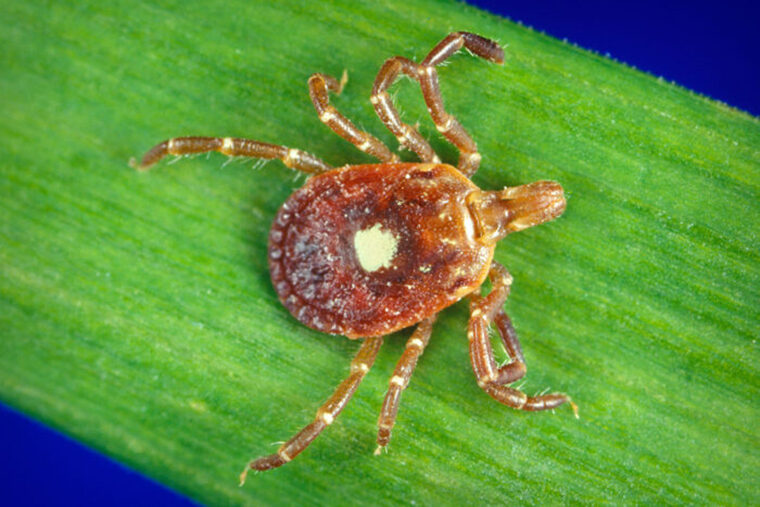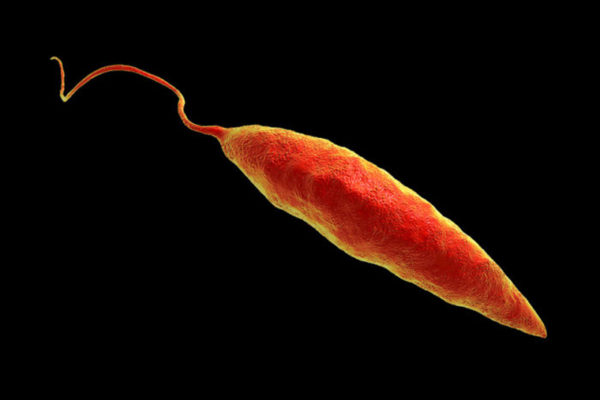Only a few cases of the newly discovered Bourbon virus have been reported, and two of them ended in death, partly because no specific treatments are available for the tick-borne illness. Now, researchers at Washington University School of Medicine in St. Louis have identified an experimental antiviral drug that cures mice infected with the potentially lethal virus. The drug, favipiravir, is approved in Japan but not the U.S. for treatment of influenza, a related virus.
“Without the flu drug, 100 percent of the infected mice died, and with the treatment, 100 percent survived,” said Jacco Boon, assistant professor of medicine and the paper’s senior author. “Up until now, doctors have not had any way to treat Bourbon virus. We’ve found something that works, at least in mice, and it suggests that antivirals for flu are a good place to start looking for a treatment for Bourbon.”
The findings are published June 13 in the journal PLOS Pathogens.
Bourbon virus was first identified in 2014 in a previously healthy middle-aged man in Kansas. The man arrived at the hospital with flu-like symptoms and a history of tick bites. Thinking he had ehrlichiosis, a tick-borne bacterial infection that causes similar symptoms and often affects people in the Midwest, doctors started him on antibiotics. But the man continued to decline, and further testing for ehrlichiosis and every other infection the doctors could think of came up negative. After his death 11 days later, a sample of his blood was sent to experts at the Centers for Disease Control and Prevention (CDC) who specialize in mysterious infections. The CDC researchers identified a new virus and named it Bourbon after the county where the patient had lived.
A second case appeared in the St. Louis area in 2017, in a woman who arrived at Barnes-Jewish Hospital in St. Louis complaining of fever, fatigue and body aches. Washington University infectious disease specialist Jennie Kwon, DO, an assistant professor of medicine, worked with the CDC to identify Bourbon virus – which has similarities to flu virus – as the cause.
“We were able to tell the patient and her family that we had identified the cause of her illness, but the unfortunate part is that there was no antiviral treatment available,” said Kwon, who is also an associate hospital epidemiologist at Barnes-Jewish and an author on the paper. “The team did its best to provide supportive care, but unfortunately, she did not survive.”
The woman’s case caught the eye of Boon, an influenza virus researcher who works with Kwon and other infectious disease physicians. As influenza virus is a distant cousin of Bourbon virus, Boon and his colleagues set about seeing whether any of the drugs approved or in development for influenza could stop Bourbon virus.
The researchers quickly narrowed the list of potential drugs down to one – favipiravir – that inhibits a key protein the virus needs to multiply. Other available influenza drugs were unlikely to work because they target parts of the influenza virus that differ from Bourbon virus.
Since Bourbon virus infections are rare, Boon and colleagues could not study the potential drug in people. Instead, they infected mice with the virus, using a strain of mice with weakened immune systems since healthy mice were able to fight off the virus. All of the immunocompromised mice died six to eight days after they were injected with the virus.
In a separate experiment, the researchers treated infected mice with the flu drug or a placebo for eight days. When the mice were given the antiviral at the same time or within one day of becoming infected with the virus, all survived without becoming visibly ill. In contrast, none of the infected mice that received a placebo survived. When the researchers gave the antiviral treatment three days after infection – a time when the mice already looked sick and had lost weight – all of the treated mice recovered.
Tick-borne infections are a growing problem in the Midwest, according to the CDC. While very few people have been diagnosed with Bourbon virus – a third case, of a patient who survived, was identified in Oklahoma – there may be many more who were exposed to the virus but did not get sick enough to wind up in the hospital.
“We really don’t have any way of telling how common Bourbon virus infection is or how deadly it is,” said Boon, who is also an assistant professor of molecular microbiology, and of pathology and immunology. “Ticks have always been here, and now we know that Bourbon virus is in ticks in this area. There have probably always been people getting infected with Bourbon virus, and we just did not know what it was before.”
Since favipiravir is not approved by the FDA, it is not clear whether doctors in the U.S. would be able to obtain it for their patients. The best protection against Bourbon virus is to avoid tick bites by wearing insect repellent and long pants and sleeves, and doing regular tick checks after outdoor activity, the researchers said.



